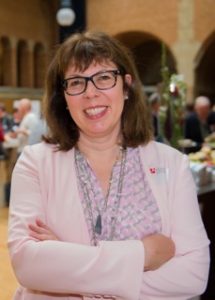
In the past decade, the terms makerspace, hackerspace and fablab have appeared on the horizon. These are new names for what people have always done—come together to fix things, make new things and learn from each other.
These spaces support learning and doing in a way that redefines both traditional schooling and traditional manufacturing. Smart tools, rapid prototyping, digital fabrication, and computational technology combine with the global reach of the internet to share ideas, solutions to problems, and best of all, the actual designs of things you can make yourself.
Launch pads
These spaces are launch pads for a future where people of all ages can be agents of change rather than objects of change. Let’s look at each:
- Hackerspace “Hacking” is both the action and belief that systems should be open to all people to change and redistribute for the greater good and often done for fun and amazement. It’s unfortunately recently gained the connotation of illegal and invasive computer activity, which was not part of the original meaning.
Hackerspaces are more prevalent in Europe than the US. A hackerspace is typically communally operated, but there are many models in use. - Makerspace: Since MAKE magazine debuted in 2005, the word “making” has been adopted as a softer, safer alternative to hacking. This is especially true in K-12 schools, libraries, museums, and youth centers where the subversive aspect of “hacking” might be seen as negative or even criminal.
- Fablab: Short for “fabrication lab,” fablab is a generic term, a nod to Fab Labs (see next) without formally joining the network. Even though the “fab” refers to digital fabrication, the activities in fablabs aren’t restricted to 3D printing and laser cutting. They run the gamut of physical and digital construction, using tools, crafts, and modern technology.
- Fab Lab: The non-generic use of the term refers to spaces and organizations that participate in a network run by the Fab Foundation led by Neil Gershenfeld and Sherry Lassiter of the MIT Center for Bits and Atoms. Neil Gershenfeld is the author of the 2005 book Fab: The Coming Revolution on Your Desktop-from Personal Computers to Personal Fabrication that predicted much of the impact that personal fabrication tools would have on the world.
As of July 2019, the Fab Lab network includes over 1,800 Fab Labs worldwide. All Fab Labs have a common charter and specific requirements for space and tools including digital fabrication tools, milling machines, cutters, CNC machines, etc.
Every Fab Lab is required to have free and open access to the public and participate in the network. - FabLearn Labs: Formerly known as Fablab@school, FabLearn is run out of the Transformative Learning Technologies Lab (TLTL), a research group led by Paulo Blikstein within Columbia University’s Teacher’s College.
These K-12 school-based labs, developed in collaboration with university partners internationally, put digital fabrication and other cutting-edge technology for design and construction into the hands of middle and high school students. The goal of FabLearn Labs is similar to the Fab Lab network, but with a focus on the special needs and practices that support K-12 education. - Tool sharing cooperatives, clubs and community workshops: The are an infinite variety of non-profit and commercial organizations offering community tool sharing, classes, or incubation space for new business ideas. They usually offer fee-based membership packages, but even commercial spaces may offer some free access in the spirit of serving the local community. These spaces are prime candidates for school partnerships, offering expertise, internship opportunities for students, or access to expensive equipment that might be out of reach of your budget.
- School: Don’t forget that there is a long tradition of hands-on learning spaces in schools variously called labs, studios, shops, libraries, and even classrooms.
It doesn’t have to be a new space with a new name. Libraries don’t have to change their name to be a place where hands-on activities are as important as the books on the shelves.
While a refresh is always good, a school makerspace should not mean throwing away books or closing the auto shop. There is incredible potential to be found in integrating these activities—and integrating the segregated populations they tend to serve.
No matter what you call it, embracing the concept of a modern technology update to beloved hands-on activities and discovery centers means that a new generation can have hands-on, minds-on experiences that empower and educate. It reflects the reality that people learn in unique and personal ways. There is no reason that every learning space, including the name, should not be unique and personal as well!
Sylvia Martinez is a former aerospace engineer and video game designer, and the co-author of the book, Invent To Learn: Making, Tinkering, and Engineering in the Classroom, called “the bible of the classroom maker movement.” She was a speaker at DA’s FETC.
Interested in edtech? Keep up with DA’s Future of Education Technology Conference®.







